Most people don’t associate plumbing issues with their pets, but problems can crop up unexpectedly when you share your home with a dog or cat. Several common pet-related plumbing problems exist. Your pet may drink from the toilet or like to splash in the sink or bathtub. While this is fun for the pet, it wastes water and can put strain on your pipes. Additionally, pet hair can clog drains every time your dog or cat gets a bath. To keep your drains and pipes clean with pets around, follow our proven plumbing tips.
Keep Hair from Clogging Pipes with a Drain Strainer
Many pet owners think their pets shed less than they actually do. If you own a short-haired dog or cat, it can be tempting to think he or she doesn’t shed at all. The truth is: all pets shed, and they do so more than we think. Large amounts of hair can come off when cleaning a pet, especially if it squirms during bath time. A drain strainer can keep all that hair out of your pipes and will make cleaning the tub easier.
Use Drain Covers and Secure Exposed Pipes
Open pipes and drains spell disaster for your plumbing and pets. In particular, puppies and kittens chew on pipes or drains to develop their teeth. Additionally, sometimes small pets become trapped in pipes or drains. To prevent these mishaps, buy drain covers and make sure all exposed drains are secure. You can also wrap your pipes to discourage chewing or block exposed pipes with heavy furniture or other objects. Make sure your pet has chew toys to keep his or her mouth occupied. Cover your floor drains if you have puppies, kittens, or other small animals like hamsters.
Flush Carefully
Never flush your cat’s litter or any other “flushable” pet products. Most of these products will harm your plumbing system. At the very least, they will dirty your pipes, which allows more clogs to build up. Change cat litter often and don’t flush pet waste down the toilet.
Check the Pressure
During bath time, pet owners often use water that’s too hot or cold without knowing it. The problem is usually the water pressure. Install a balancing valve, or double-check the ones you already have before bath time. Test the water temperature before putting in your pet. If it’s too hot for you, it’s dangerous for your pets. Additionally, make sure the water pressure isn’t too fast or slow. Too much pressure might overwhelm your pet with water, and too little could make bathing an endless chore.
Make Sure Pets Have Plenty of Water
Some pets can’t seem to get enough to drink, so they sip from the toilet or sinks. Be vigilant to stop this, particularly if your pet figured out how to turn on the faucets. Your pets need fresh water often to stay hydrated. Keep clean, filled water bowls in the same place every day. Consistency conditions your pet to use the same bowl and location to drink. As much as possible, keep toilet lids down and bathroom doors closed when pets are inside. If your pet drinks excessively, see your veterinarian.
These pet-friendly tips can help you prevent some major plumbing problems and health concerns for your favorite furry friends.
For more plumbing tips and information, contact The Eco Plumbers at any time.












